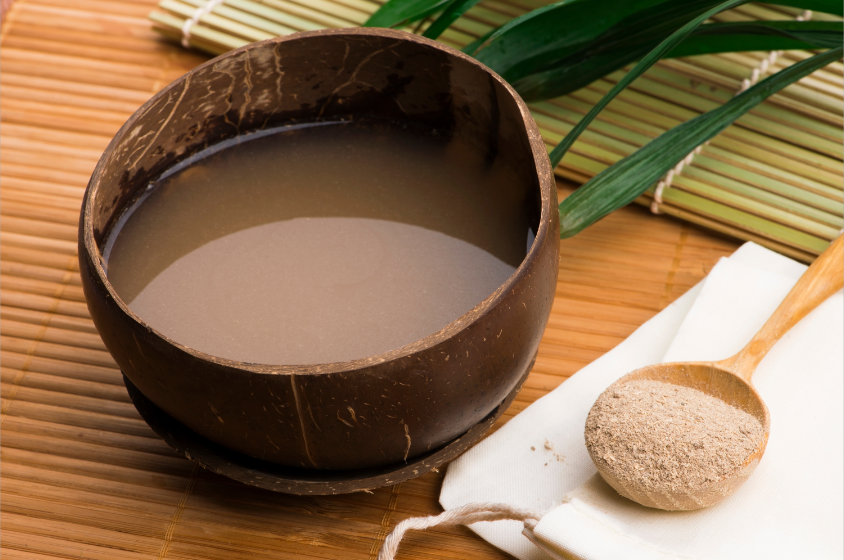Exploring the World of Kava: An Introduction
The kava plant (Piper methysticum) is a shrub that commonly grows in the South Pacific Islands. Most notably those islands are Fiji, Solomon, Vanuatu, The Kingdom of Tonga, and Hawaii. Experts estimate that there exist around 105 different varieties of kava kava. Farmers typically cultivate kava plants for a period of 3 to 5 years before harvesting them.
This allows the kava to mature and also allows the kavalactones to fully develop. Kavalactones are part of the kava plant that give kava its beneficial mind and body relaxation effects. Kava has the potential to reach a height of approximately 6 feet. As the kava ages, the stalks thicken and the root will eventually reach a depth of around 2 feet.
Processors dry or leave the kava plant's root and stump green. Then, they pound them into an all-natural ingredient. This pounded kava will produce a non-alcoholic beverage. When consumed, the kavalactones will produce muscle and mental relaxation.
Some call this beverage kava kava tea, but this is technically incorrect. To prepare tea or tisanes, one typically uses near-boiling water and allows them to steep for some time. Kavalactones are not water soluble (they are fat soluble, however).
To prepare the crushed kava kava root, one typically massages it using a cheesecloth. In a bowl of water for approximately 10 minutes. This helps to coax out the kavalactones into the liquid. Adding fat such as coconut milk will help this process significantly.
Scientific and Pharmacological Details
Kavalactones, compounds found in the kava plant, primarily contribute to its calming effects. These active components interact with the nervous system, especially the GABA (gamma-aminobutyric acid) receptors. GABA is a key neurotransmitter that inhibits nerve transmission in the brain, calming nervous activity.
This interaction is crucial to understanding kava's anxiolytic (anxiety-reducing) and sedative properties. Unlike other substances that induce relaxation, kava's unique molecular structure allows it to promote mental clarity while reducing anxiety. Making it a subject of interest in pharmacological research.
Cultural and Historical Context
Kava, deeply rooted in the traditions of South Pacific societies, holds significant cultural and historical importance. In Fiji, Vanuatu, Tonga, and Hawaii, kava has been an integral part of social and ceremonial life for centuries. Traditionally used in rituals, kava ceremonies are not only social events. But also a means of strengthening community bonds and showing respect to guests.
Its symbolic importance extends to representing peace and hospitality. The historical spread of kava across these islands is a testament to its cultural value. Each region develops unique ceremonial practices centered around kava consumption.
What Are the Effects of Drinking Kava?
Consuming prepared kava offers a lot of benefits*. Prepared kava root drinks provide relaxation of the mind and body while inducing a feeling of calm and euphoria. Hence, it's perfect for social unwinding, alleviating stress, diminishing anxiety, and relaxing muscles. Also assisting in achieving a sound night's sleep.
Many vendors put their FDA notes at the bottom. We love transparency so we put it up top where applicable. Any question at all about how your body may react to the use of kava with other medications you're taking? The best advice we can give you is to talk to your doctor.
Your doctor may have to adjust certain medications for use in interaction with kava. Have other insights into your current medical situation than we do as retailers. At the end of the day, you're taking kava for a reason. We want to see any of our customers who use kava better off than you started.
*FDA Statement Note: The FDA has not evaluated any statements about Kava's effects. Our information and products do not aim to diagnose, treat, cure, or prevent any disease. Before starting a dietary supplement, it’s always wise to check with a medical doctor.
People who are pregnant, breastfeeding, chronically ill, elderly, under 18, or taking medications should pay special attention. This information neither seeks to promote purchases nor serves as medical advice or instruction. Herbal products, containing unique phytochemicals not typically found in standard food sources, can produce physiological effects.
We recommend using herbal products judiciously and only under the guidance of trained healthcare professionals. There may be drug interactions that may produce reactions or interfere with the efficacy of the prescription medication.
How Kava Works
The combination of kavalactones (described above) is what creates the calming effects of kava root. We know about 18 different kavalactones. Six of these kavalactones provide the majority of those active ingredients. The Chemotype represents a mixture of kavalactones, ranked from strongest to weakest.
Different varieties of kava have different chemotypes. Further, the stump and the lateral roots will typically have different chemotypes. This means a prepared kava beverage from two different parts of the plant will produce different effects.
Some chemotype mixes are more uplifting and great for drinking in the daytime. Others are fantastic for drinking in the nighttime and used as a sleep aid.
Kava Side Effects
Good Kava Has No Hangovers
Noble kava will not create hangovers. Two categories of kava and both contain many types; Noble and Tudei. Tudei will have an effect as it sounds, for two days. This means that there is a potential for a kava hangover.
Typically you will only find high-quality Noble kava available in the market. Certain parts of the South Pacific mostly reserve Tudei for traditional ceremonies. Noble however won’t increase the toxins in your body that lead to headaches and hangovers.
Kava won’t impair your cognitive abilities or mental clarity in the same way alcohol does. However, it may lead to issues with coordination. It boosts mood and tends to make people more talkative while maintaining rational thought.
None of the downsides of alcohol make people aggressive and depressed. Consuming a lot of kava typically results in sedation and sleepiness. With these effects and potential coordination issues, we still recommend not driving after drinking kava.
Kava is Non-Addictive
Kava has proven to be non-addictive. Drinking kava consistently shows it to be non-habit-forming. You will also not build up a tolerance. Typically people have to consume more and more of a substance as time of use goes by.
This is the opposite of kava. Consuming kava more consistently enhances its beneficial effects with less quantity required.
Kava and Potential Liver Toxicity
When a person learns about something new that may help them, they head to the internet to find websites, blog posts, and articles. To substantiate or debunk information they’ve gathered. As you research kava, you will likely stumble upon research that led to kava possibly causing liver toxicity. This further led to the ban of kava in Switzerland and Germany.
Subsequent new research in 2015, questioning earlier findings, led to the reversal of the bans. New research found that liver problems from kava occurred when combined with other drugs and medications. Known to negatively affect liver function or were consuming contaminated kava.
This outdated information still predominates online. It overshadows more recent university research studies that provide a better understanding of Kava's effects.
According to the National Library of Medicine, the risk of liver injury from kava is extremely low. In fact, there is less than 1 case per 1 million daily doses. So the likelihood of negative health side effects from drinking kava is small.
Noble vs. Tudei Varieties
Lab-tested kava is the only kava you should be looking at when deciding on a purchase. With Noble kava varieties being the one you will want to buy. As explained in less detail above, Noble and Tudei kava are the two main categories.
Tudei, like the name sounds, will have hangover and nausea effects that will last into the second day (two days). This kava serves ceremonial or medicinal purposes.
At Art of Kava, we sell only lab-tested kava, batch by batch. We source our noble kava directly from farmers in the South Pacific, ensuring quality from start to finish.
Heady, Heavy, and Balanced
Researchers have identified over 100 kava cultivars within two main categories. They subcategorize these cultivars into three groups based on their effects: Heady, Heavy, and Balanced.
Heady: Mental or heady effects will be relaxing, mood-boosting, and make you feel happy or euphoric. This is a calmer, more sociable kava.
Heavy: Will make your body's limbs feel heavy, relax your muscles, and calm your mind. These are sedative kavas that will work well as a sleep aid.
Balanced: As the name suggests, this is a balance of heavy and heady. You have the mental and physical relaxation effects of both with less of the sedative effect. You can drink these throughout the day.
Kava Culture
On the islands of the South Pacific, there is a long history of consuming kava. Kava holds a deep-seated position in the cultures of Fiji, Vanuatu, The Kingdom of Tonga, and Hawaii.
Since 2010, kava has grown to be much more popular worldwide as people discover its unique benefits and history. Kava bars are opening all over the United States. Find a kava bar on Google by searching kava bar near me and you will likely find one or one that is opening soon.

